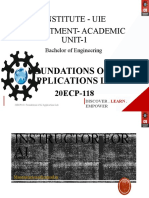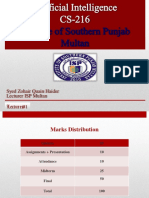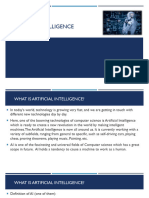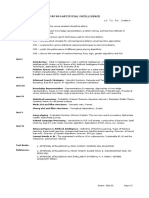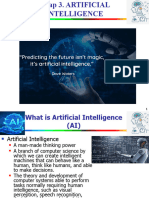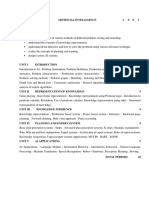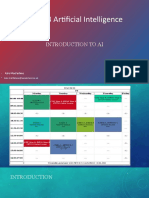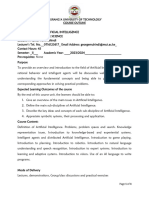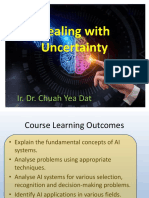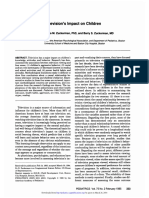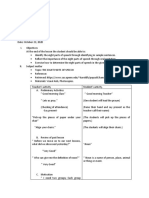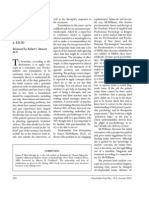0% found this document useful (0 votes)
154 views12 pagesAI Course: UEMH4723 Overview
This document provides an introduction and overview for a course on Applications of Artificial Intelligence. The course is taught by Mohammad Babrdel Bonab and uses the code UEMH4723. It introduces basic AI concepts like supervised and unsupervised learning, problem solving, neural networks, and data science. The course outline includes topics on introduction to AI, problem solving using search, dealing with uncertainty, neural computing, and data mining. It will teach techniques like genetic algorithms and provide an example application of using genetic algorithms to solve the travelling salesman problem. The learning outcomes, references, tools, and teaching philosophy are also outlined.
Uploaded by
Alyssa AnnCopyright
© © All Rights Reserved
We take content rights seriously. If you suspect this is your content, claim it here.
Available Formats
Download as PDF, TXT or read online on Scribd
0% found this document useful (0 votes)
154 views12 pagesAI Course: UEMH4723 Overview
This document provides an introduction and overview for a course on Applications of Artificial Intelligence. The course is taught by Mohammad Babrdel Bonab and uses the code UEMH4723. It introduces basic AI concepts like supervised and unsupervised learning, problem solving, neural networks, and data science. The course outline includes topics on introduction to AI, problem solving using search, dealing with uncertainty, neural computing, and data mining. It will teach techniques like genetic algorithms and provide an example application of using genetic algorithms to solve the travelling salesman problem. The learning outcomes, references, tools, and teaching philosophy are also outlined.
Uploaded by
Alyssa AnnCopyright
© © All Rights Reserved
We take content rights seriously. If you suspect this is your content, claim it here.
Available Formats
Download as PDF, TXT or read online on Scribd
/ 12

